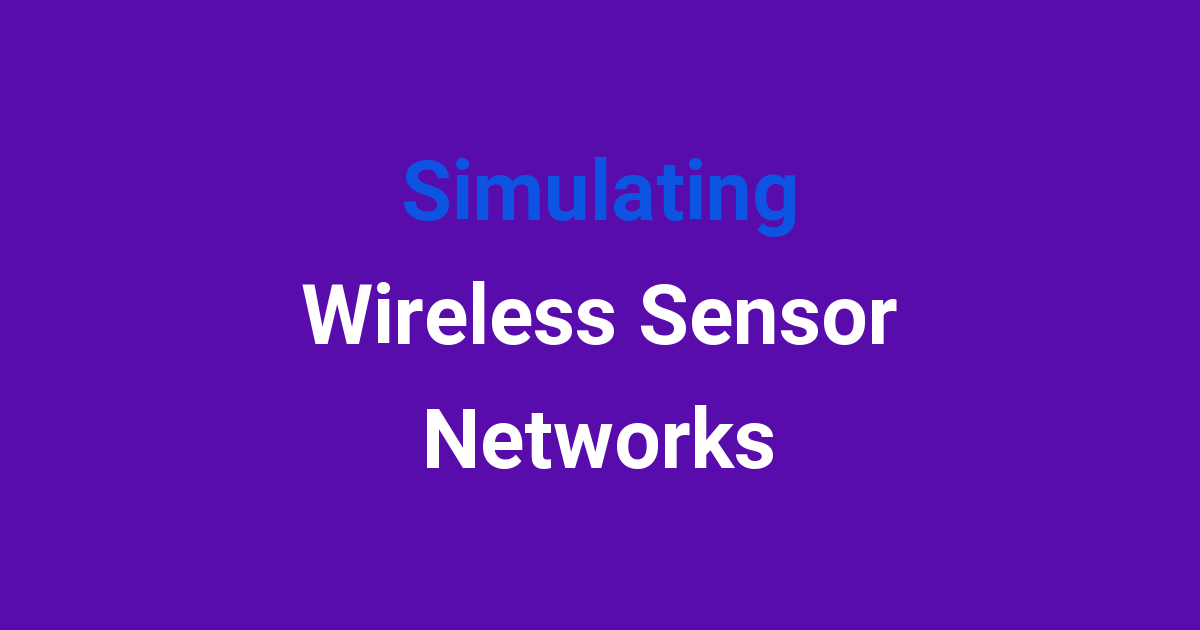Thorough investigation is required when designing and implementing wireless sensor networks.
Simulating Wireless Sensor Networks for Improved Performance
Introduction
Wireless Sensor Networks (WSNs) have become increasingly popular in recent years due to their ability to collect and transmit data in various applications such as environmental monitoring, healthcare, and industrial automation. WSNs consist of small sensor nodes that communicate wirelessly to gather information about the surrounding environment.
However, simulating WSNs is crucial for evaluating their performance, identifying potential issues, and testing new protocols before deployment. In this project, we aim to simulate a wireless sensor network to study its behavior and propose a new system for improved performance.
Problem Statement
While WSNs offer numerous advantages, they also present several challenges such as energy consumption, network scalability, and data reliability. These issues can lead to decreased network performance and compromised data quality. Current simulation tools for WSNs may not adequately address these challenges, making it essential to develop a more effective system.
Existing System
The existing simulation tools for WSNs, such as NS-2, TOSSIM, and OMNeT++, have been widely used in research and academia. While these tools provide valuable insights into WSN behavior, they may have limitations in terms of accuracy, scalability, and flexibility. For example, NS-2 is a popular tool but may not accurately model the complexities of real-world WSNs. TOSSIM, on the other hand, is specific to TinyOS-based networks and may not be suitable for other platforms.
Additionally, existing simulation tools may not fully address the challenges of energy consumption, network coverage, and data reliability in WSNs. These limitations highlight the need for a new system that can overcome these issues and offer more accurate simulation results.
Disadvantages
Some common disadvantages of existing WSN simulation tools include:
- Lack of accuracy in modeling real-world WSN behavior
- Limited scalability for large-scale networks
- Specificity to certain network platforms or protocols
- Inadequate support for energy-efficient routing and data aggregation
- Difficulty in integrating new protocols or algorithms
These disadvantages can hinder the effectiveness of current simulation tools in evaluating WSN performance and developing new solutions for WSN challenges.
Proposed System
Our proposed system for simulating WSNs aims to address the limitations of existing tools and offer a more comprehensive solution for studying WSN behavior. The key features of our proposed system include:
- Accurate modeling of WSN behavior in diverse environments
- Scalability for large-scale networks with hundreds or thousands of nodes
- Flexibility to support multiple network platforms and protocols
- Energy-efficient routing algorithms and data aggregation techniques
- Easy integration of new protocols or algorithms for testing
By incorporating these features, our proposed system aims to provide researchers and practitioners with a reliable tool for simulating WSNs and developing innovative solutions for WSN challenges.
Advantages
Some potential advantages of our proposed system for simulating WSNs include:
- Improved accuracy in modeling WSN behavior
- Enhanced scalability for large-scale network simulations
- Support for multiple network platforms and protocols
- Energy-efficient routing and data aggregation for improved performance
- Flexibility to test and evaluate new protocols or algorithms
These advantages can help researchers and developers in effectively studying WSNs, identifying potential issues, and proposing new solutions for enhancing WSN performance.
Features
Some key features of our proposed system for simulating WSNs include:
- Graphical user interface for easy simulation setup and visualization
- Real-time monitoring of network performance metrics
- Customizable network parameters for diverse simulation scenarios
- Built-in support for energy consumption analysis and optimization
- Integration with popular WSN protocols and algorithms for testing
These features aim to provide users with a comprehensive and user-friendly tool for simulating WSNs and evaluating their performance in various applications.
Conclusion
In conclusion, simulating wireless sensor networks is essential for studying their behavior, identifying challenges, and proposing new solutions for improved performance. Our proposed system aims to address the limitations of existing simulation tools and offer a more comprehensive solution for researchers and practitioners in the field of WSNs.
By incorporating accurate modeling, scalability, flexibility, energy efficiency, and easy integration of new protocols, our proposed system can help advance the study and development of wireless sensor networks for various applications.

